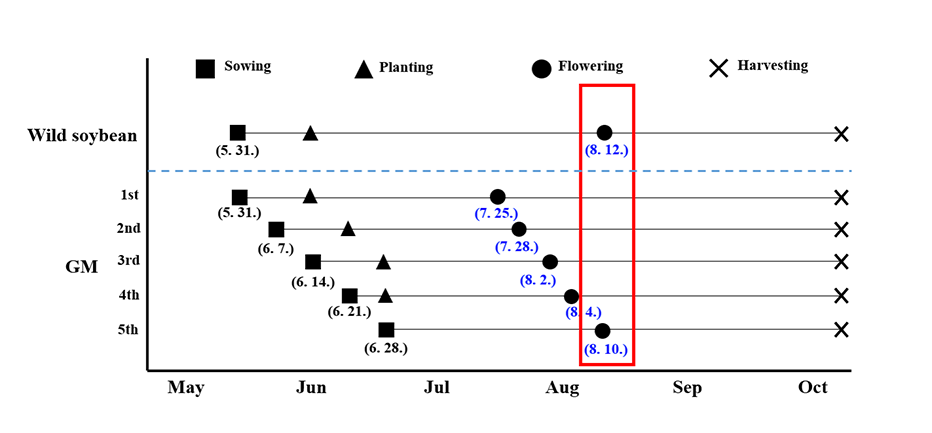Abstract
As the cultivation area for genetically modified (GM) crops is increasing continuously, the concerns about the environmental release of GM crops are also growing. Therefore, we conducted this study to verify gene flow from GM soybean, β-carotene enhanced transgenic soybean, to wild-type soybean and analyze the characteristic of hybrid soybean. The hybridization rate between β-carotene enhanced soybean and wild-type soybean was 0.21%. The hybrid soybean showed the highest value on stem length, number of branches and number of nodes than the β-carotene soybean and wild-type soybean. The seeds of hybrid soybean had intermediate characteristics between β-carotene enhanced soybean and wild-type soybean in seed length, seed width, seed weight and seed coat color. The germination time of hybrid soybean was faster than wild-type soybean while the wild-type was similar with β-carotene enhanced soybean. The hybrid soybean showed the lower over-wintering dormancy rates than wild-type soybean after 5 months, and the β-carotene soybean had extremely low or no dormancy rates on all conditions. These results indicate that the hybrid soybean has intermediate characteristics between their parents and will be useful for research in management of GM crops and hybrid crops.
Figures & Tables

Fig. 1. The date of sowing and flowering in wild soybean and each β-carotene enhanced transgenic soybean. Soybean groups in red line were used for hybridization.


